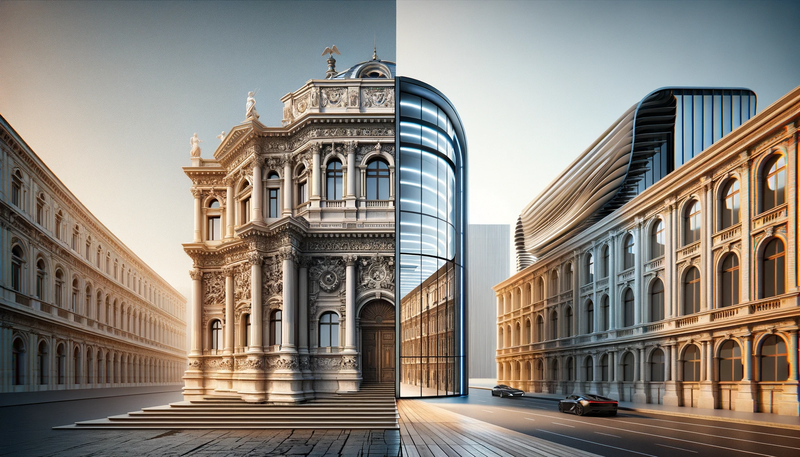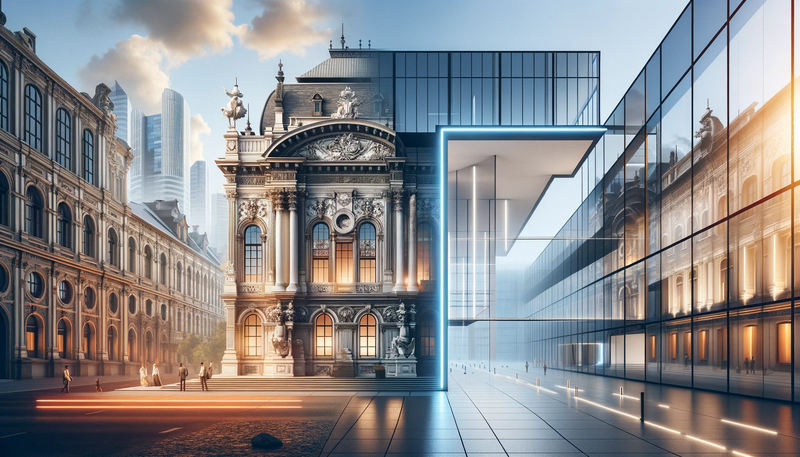Bridging the Generation Gap: How 3D Rendering Can Help Architects
Like many other fields, multiple generations working together influence the architectural industry. Each generation brings unique perspectives, experiences, and skills to the table. However, the differences between these generations can sometimes lead to communication gaps and challenges in collaboration. This article will explore how 3D rendering can bridge the generation gap in architecture, fostering better communication, collaboration, and understanding among architects of different generations.
Understanding the Generation Gap in Architecture

The generation gap refers to the differences in values, beliefs, attitudes, and behaviours between individuals from different generations. In the architectural industry, we can identify several generations, including Baby Boomers, Generation X, Millennials, and Generation Z. These generations have varying experiences with technology, design approaches, and work methodologies. Understanding these differences is crucial for fostering effective collaboration and knowledge sharing among architects.
The Role of 3D Rendering in Bridging the Generation Gap
3D rendering is a powerful tool in architectural design that allows architects to create realistic visual representations of their ideas. It serves as a common language that transcends generational differences, enabling architects to communicate and collaborate more effectively. By providing a visual medium that is easily accessible and understandable, 3D rendering helps bridge the gap in communication and understanding between different generations of architects.
Enhancing Communication and Collaboration
One of the key benefits of 3D rendering is its ability to improve visual communication. Traditional methods of conveying design ideas, such as 2D drawings and physical models, can be challenging for architects of different generations to interpret and understand. 3D rendering provides a more intuitive and immersive experience, communicating an architect’s design intent, regardless of their generational background.
3D rendering helps bridge the communication gap by enabling architects to visualize and explore design ideas together. Architects can collaborate in real time by creating virtual environments and walkthroughs, providing valuable feedback and suggestions. This collaborative process fosters mutual understanding, appreciation, and respect for different design approaches and perspectives.
Embracing Technological Advancements
Technology plays a significant role in shaping the architectural industry. Different generations have varying levels of familiarity and comfort with technology. 3D rendering serves as a technological tool that bridges this gap by providing a common ground for architects of all generations to engage with the design process.
Architects can leverage emerging technologies, such as virtual reality and augmented reality, to enhance the architectural design process. By embracing these advancements, architects can create immersive experiences that enable all generations to interact with and contribute meaningfully to the design. This inclusive approach helps break down barriers and encourages knowledge exchange between different generations.
Bridging Design Styles and Preferences

Architectural design styles and preferences often vary across generations. Older architects may prefer traditional design aesthetics, while younger architects may lean towards contemporary or futuristic styles. 3D rendering offers a flexible platform that can accommodate various design styles and preferences, allowing architects of different generations to explore and adapt to different visual languages.
Through 3D rendering, architects can experiment with different materials, colours, lighting scenarios, and spatial configurations. This flexibility enables architects to find a common ground that integrates different design styles and preferences, creating unique and harmonious design solutions that resonate with multiple generations.
Educating and Mentoring Younger Architects
The architectural industry benefits from the wisdom and experience of older architects, while also relying on the fresh perspectives and innovative ideas of younger architects. 3D rendering can play a vital role in educating and mentoring younger architects, allowing them to learn from the expertise of their more experienced counterparts.
Through the use of 3D rendering software and techniques, older architects can mentor younger architects in the art of visual communication and design exploration. This knowledge transfer facilitates the exchange of skills and expertise, contributing to the growth and development of younger architects.
Showcasing the Benefits through Case Studies
To better understand the impact of 3D rendering in bridging the generation gap, let's explore a few case studies that show successful implementation:
Case Study 1: The City Museum Renovation Project In this project, 3D rendering was used to visualize the proposed renovation of a historic city museum. The project involved architects from different generations, each with their design preferences. By using 3D rendering, the architects could effectively communicate and integrate various design elements, resulting in a cohesive and harmonious design that respected the building's heritage while incorporating contemporary features.
Case Study 2 : Sustainable Housing Development In this case, a team of architects from different generations collaborated on a sustainable housing development project. Through the use of 3D rendering, the architects could explore different design options and evaluate their sustainability features. The virtual simulations allowed them to assess the performance of materials and energy-efficient systems, leading to a design that met the requirements of both older and younger generations, blending sustainable principles with timeless aesthetics.
Overcoming Challenges and Resistance
While 3D rendering offers many benefits in bridging the generation gap, there may be challenges and resistance to its adoption. Architects from older generations may initially feel uncomfortable with new technologies, while younger architects may face resistance from more traditional-minded colleagues. Overcoming these challenges requires open-mindedness, effective communication, and collaboration between generations. It is essential to provide training, support, and a supportive work environment that encourages the exploration and integration of 3D rendering into the architectural design process.
Conclusion
Bridging the generation gap in the architectural industry is crucial for fostering collaboration, innovation, and knowledge exchange. 3D rendering serves as a powerful tool in achieving this goal by enhancing communication, embracing technology, bridging design styles, educating younger architects, and showcasing the benefits of collaboration through real-life case studies. By embracing 3D rendering, architects can overcome the challenges posed by the generation gap and create a harmonious and progressive architectural industry that benefits from the diverse perspectives and skills of all generations. By leveraging the potential of 3D rendering, architects can bridge the gap, foster collaboration, and propel the industry forward into a future where brilliant designs match great materials, regardless of generational differences. It is a call to action for architects to embrace the power of 3D rendering and work together to create a more inclusive and innovative architectural landscape.
Our Services
View some of our most popular services below.











